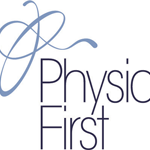What is Plantar Fasciitis?
Plantar fasciitis means inflammation of your plantar fascia. Your plantar fascia is a strong band of tissue that stretches from your heel to your toes. It’s function is to shock absorb and support the arch of the foot. Plantar fasciitis is an overuse condition that normally presents with pain in the heel which is often worse when getting up from bed in the morning. The pain tends to be worse after a period of rest and gradually eases with walking. The heel is usually tender to touch. This condition usually settles by itself in 12 to 18 months.
What causes plantar fasciitis?
Repeated small injuries to the fascia (with or without inflammation) are thought to be the cause of plantar fasciitis.
The following activities place more stress on the plantar fascia:
- Prolonged standing, walking and running. Alternatively, sedentary lifestyles make you more vulnerable to plantar fasciitis.
- Wearing footwear with limited cushioning or poor arch support. In addition being overweight puts additional strain on the heel.
- Running on altered surfaces eg. running on the road instead of a track. Or changing the training intensity or distance will place increased demand on the calf muscles and the plantar fascia.
If you have a tendency to a tight achilles tendon, calf muscle or hamstrings you are likely to have less flexibility in your plantar fascia. Soft tissues that are tighter are more prone to soft tissue injury and strain.
Often there is no apparent cause for plantar fasciitis, especially in older people. A common misconception is that the pain is due to a bony growth coming from the heel bone. Many people have a bony spur on the heel but this does not necessarily lead to plantar fasciitis.
What is the treatment for plantar fasciitis?
Usually the pain will ease in time. ‘Fascia’ tissue heals quite slowly. It may take several months or more to go. However, there are a number of treatments that will help speed up the recovery.
Enhancing recovery
Take care of your foot
Relative rest is important. Avoid running, excess walking or standing, and undue stretching of your sole. However, gentle walking is beneficial.
Footwear
Avoid walking barefoot on hard surfaces. Choose shoes with cushioned heels and a good arch support. A laced sports shoe rather than open sandals is better whilst the pain is settling.
Heel pads and arch supports
You can buy various pads or shoe inserts to cushion the heel and support the arch of your foot. These work best if you put them in your shoes at all times. Place the inserts/pads in both shoes even if you only have pain in one foot.
Pain Killers
Painkillers such as paracetamol will often ease the pain. Sometimes anti-inflammatory medicines such as ibuprofen are useful. Discuss appropriate anti-inflammatory medications or pain killers with a pharmacist. Some people find that rubbing a cream or gel that contains an anti-inflammatory medicine onto their heel and through the arch is helpful. An ice pack (such as a bag of frozen peas wrapped in a tea towel) held to the arch of your foot for 10 minutes may also help to relieve pain. However, do be aware that ice can burn so regularly check your skin.
Exercises
Regular, gentle stretching of your calf muscles, achilles tendon and plantar fascia may help to ease your symptoms. Your doctor may refer you to a physiotherapist for exercise guidance.
To stretch your plantar fascia, hold your foot and pull your big toe towards your knee until you feel a stretch in the sole of your foot. For both stretches hold this position for 30 seconds and release. Repeat 5 times, twice a day. Occasionally these stretches can provoke your symptoms so start slowly and stop if your pain increases.





